Canon EOS M3 specification: Canon’s first 24.2Mp APS-C sensor and DIGIC processor
It’s fair to say Canon has been a little slow in embracing the mirrorless camera revolution, so while the likes of Panasonic and Sony have a large range of different hybrid formats available, Canon’s EOS M series is only into its third release. What’s more, with the original two versions of the EOS M somewhat underwhelming, Canon enthusiasts will be pleased that the latest release, the EOS M3, looks to be a serious effort. Apparently reaching out to enthusiast photographers rather than to beginners, the new EOS M3 boasts a redesigned shell, with more externally-mounted controls for better handling, and a few impressive specs that have filtered down from the recently-released 750/760D entry-level DSLRs.
These include Canon’s first 24.2Mp APS-C CMOS sensor, which puts the EOS M3 right up there with the higher-resolution Canon DSLR cameras, and is only surpassed by their recently-released 5DS 50.6Mp monster resolution offering. Add to that Canon’s latest DIGIC 6 image processing engine and, on paper at least, the new Canon EOS M3 should deliver image quality on par with many of its DSLR siblings.
Handling and layout is another key area for enthusiasts considering a mirrorless option as either a backup to their DSLR or as a main body. With less camera “real estate” to get hold of, the placement of the dials and controls is key, so with the EOS M3, Canon has moved more towards a DSLR-style layout compared to the compact camera feel of its predecessors. So there’s a slightly larger sculpted handgrip with more externally mounted controls, including an Exposure Compensation control dial, as well as customizable function buttons.
Add to that a built-in pop-up flash and a standard hotshoe for attaching either a more powerful external flash or the $250 EVF-DC1 electronic viewfinder (EVF), and the EOS M3 does start to look like a serious contender. The pop-up flash unit itself is relatively weak, with a Guide Number of just 10, but it offers some bounce flash control simply by pushing the unit back a little. It can’t be used to control external flash units either, unfortunately, so you’ll need to connect an external flashgun for that; and with no built-in EVF on offer with a flash connected to the hotshoe, you’ll be restricted to using the LCD for composition.
The LCD screen itself is a 3.0-inch touch screen that’s articulated to tilt up 180 degrees for the perfect selfie, and down 45 degrees for shooting video at waist height or for composing shots at awkward angles. Touchscreen autofocus will also help videographers create artistic pull focus effects, and full manual control over video exposure settings also opens up a world of creative video possibilities on the EOS M3.
For movie capture, the EOS M3 offers full HD video at 24/25/30 fps or 720p at 50/60fps, as well as compatibility with the more commonly-used MP4 format for easier video file-sharing via the built-in wi-fi or NFC connectivity.
The M3’s autofocus system is the same 49-point hybrid CMOS AF III system also borrowed from the latest Canon DSLRs, which Canon claims is over 6 times faster than autofocus on the original EOS M.
For lenses, the M3 uses Canon’s smaller EF-M lens mount with four dedicated EF-M lenses available, covering wide-angle through to telephoto focal lengths, a “fast” pancake prime lens, and an EF-EOS M mount adapter that allows you to connect Canon EF or EF-S lenses, too.
The EOS M3 will be available from April 2015 at an expected retail price of $770.
Canon EOS M3 specification: Canon’s APS-C doesn’t hit the same heights as Sony
With myriad sensor formats available in the hybrid offerings from all the major players, it’s tricky to keep track. Sony, Pentax, Samsung and Canon have all managed to build their mirrorless options around the larger APS-C type sensor found in most entry-level and some semi-pro DSLRs; Nikon has opted for the much smaller 1-inch CX format; and Panasonic and Olympus are somewhere in the middle with their Micro-Four-Thirds format.
Although it’s a relevant and good rule of thumb that the physically larger the sensor is, the better its performance, the rule doesn’t always pan out. Despite both cameras using the larger APS-C format ,there’s a big difference in image quality between the class-leading Sony A6000 mirrorless hybrid with a DxOMark Sensor Score of 82 points and Canon’s M2 with 65 points. That equates to a whole stop better image quality for the A6000, and the same can be said for Pentax’s K01, which scores a very respectable 79 points (only outdone by the Sony models at the top of the DxOMark database).
Both these Sony and Pentax models offer over one stop better image quality in the sub-categories of Dynamic Range and Color Sensitivity at the base sensitivity of ISO 100. While the gap narrows somewhat as sensitivity is increased, and particularly so for Dynamic Range (see chart below), the APS-C sensors in the Sony and Pentax models still consistently deliver better results than the EOS M2 throughout the ISO range. How much Canon can close this image quality gap on its APS-C rivals with the new 24.2Mp sensor in the EOS M3 remains to be seen, but we’ll be sure to bring you the results and a full review as soon as they’re in.


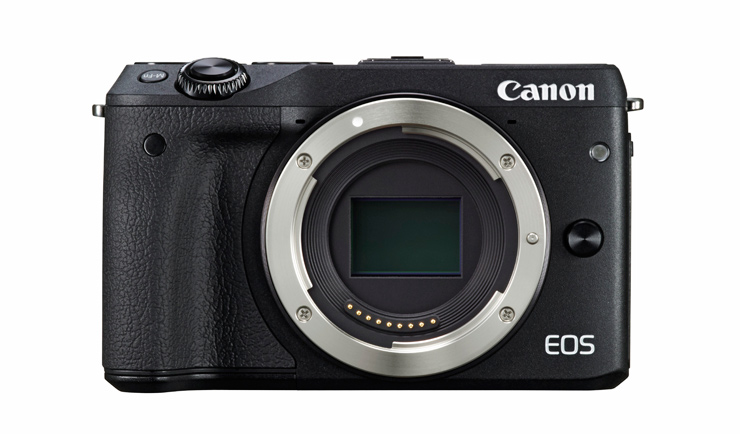
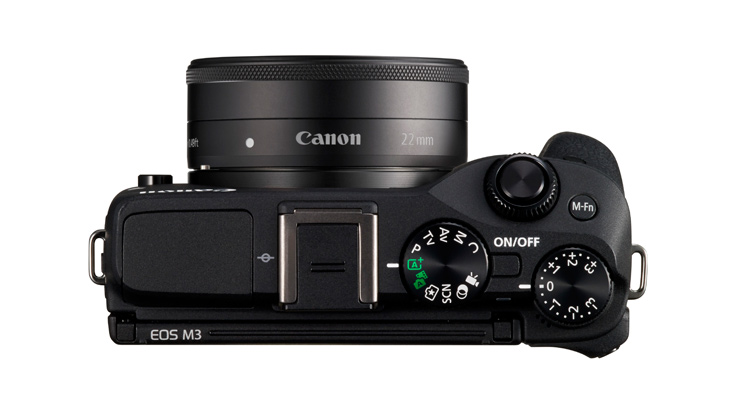
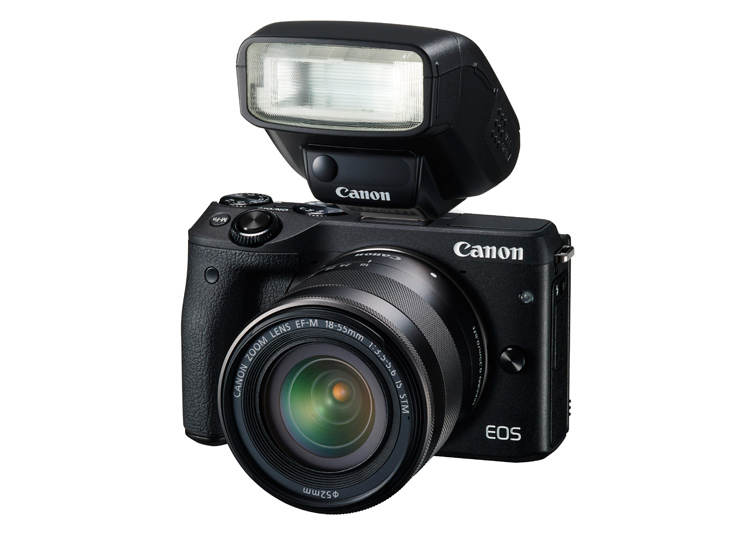
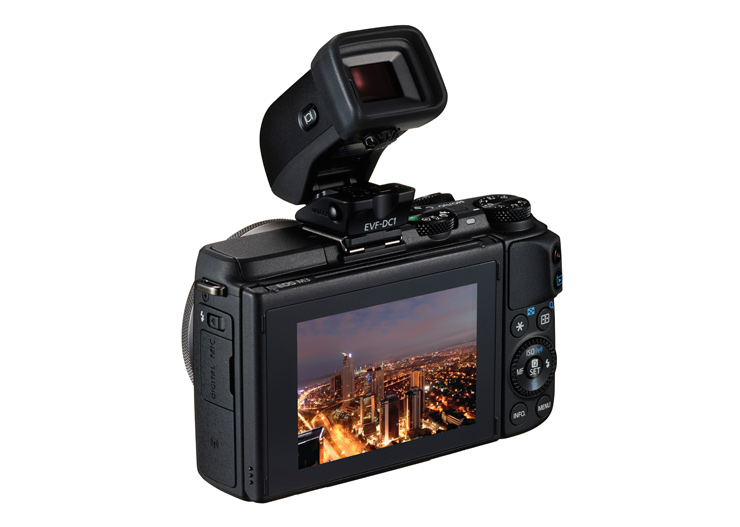
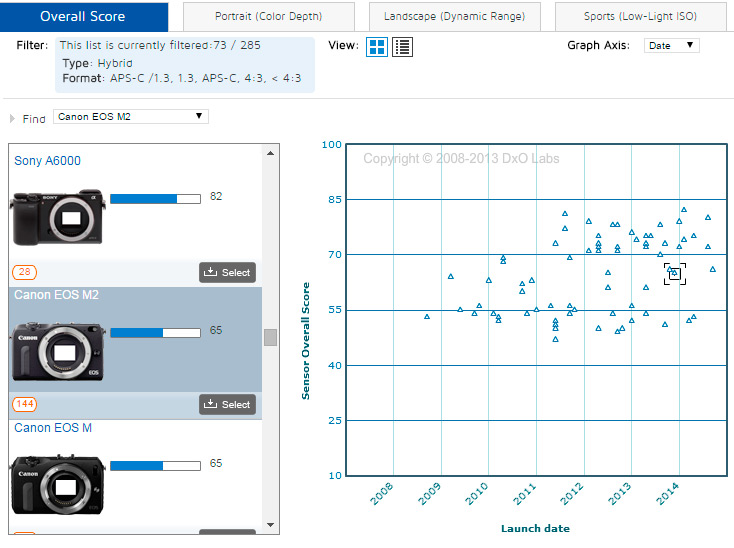
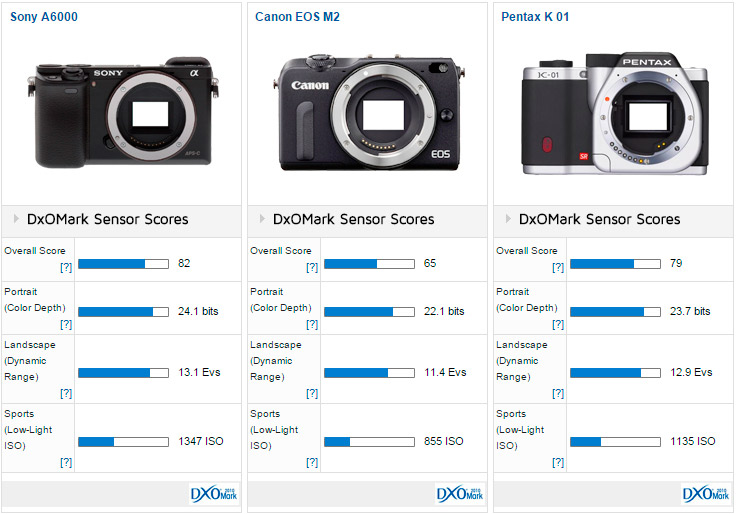
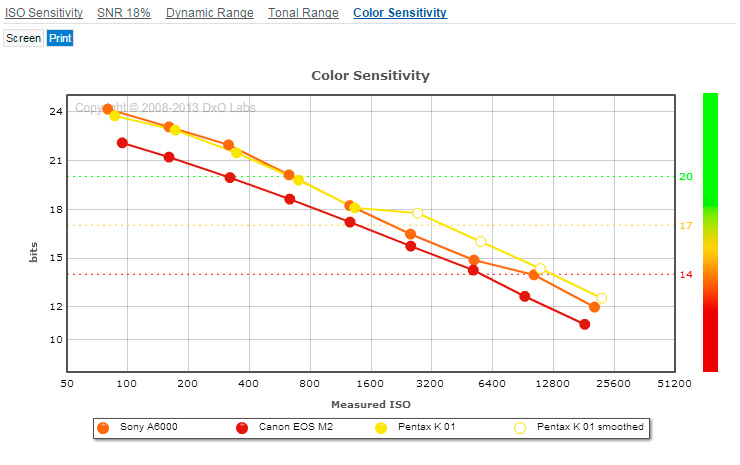
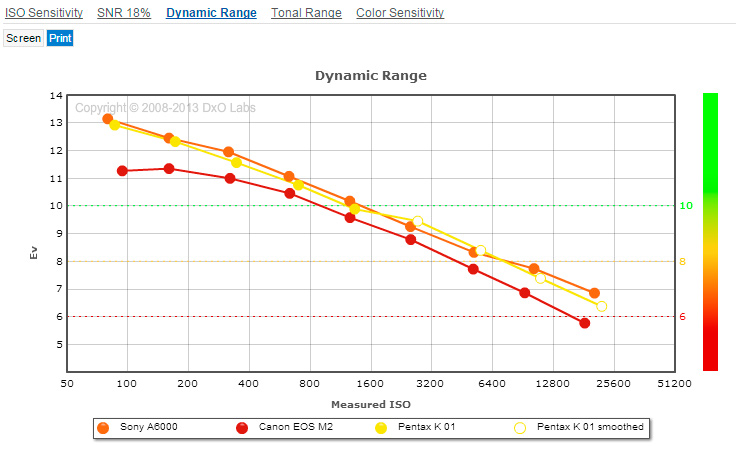
DXOMARK encourages its readers to share comments on the articles. To read or post comments, Disqus cookies are required. Change your Cookies Preferences and read more about our Comment Policy.